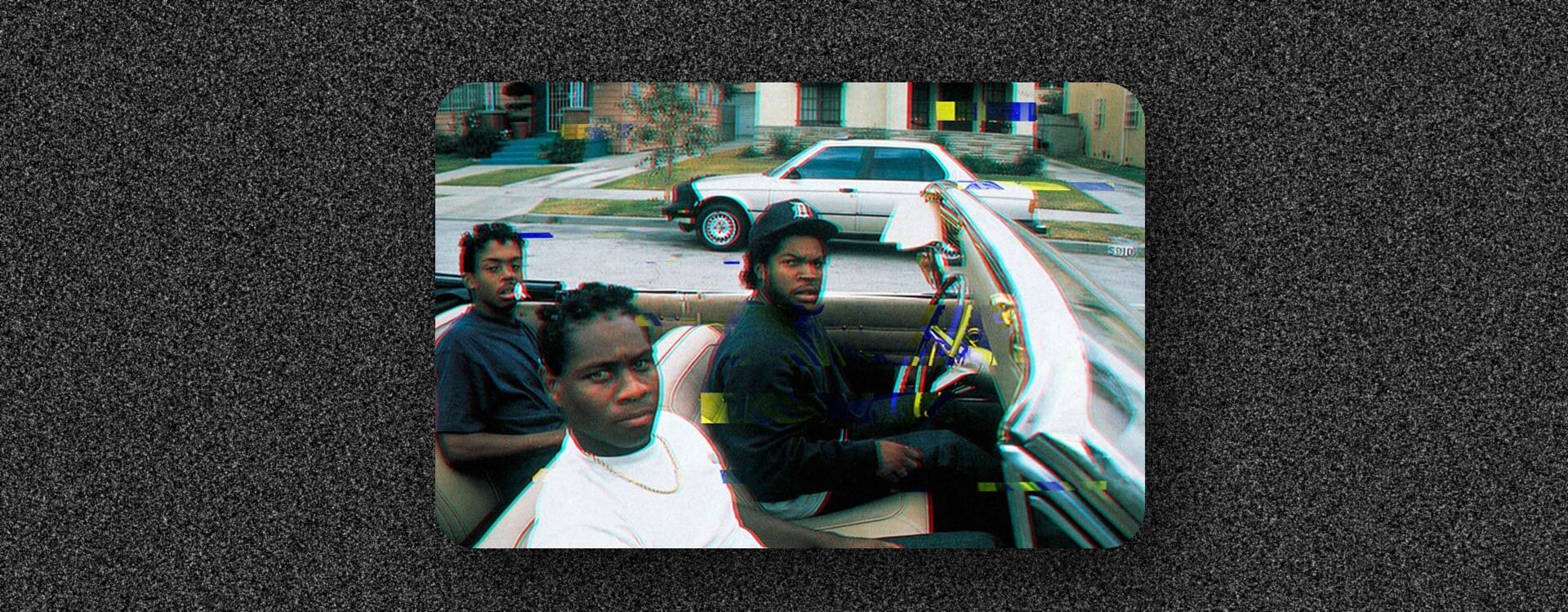Highlights
Table of Contents
Explore article topics
30 years ago today, a young writer/director exploded onto the Hollywood scene with a movie that would transform his career and those of the leading cast. The writer/director was John Singleton, and the movie was none other than Boyz n the Hood.
With the 30th anniversary of the film upon us, I want to take a look at the influence this film has had not only on African-American cinema specifically, but filmmaking and other aspiring filmmakers in general. And to do that, I need to start at the beginning of my personal filmmaking journey.
Broken Hip Hop dreams
In the summer of 1990, a group of 3 other young, aspiring music executives and I started an artist management group called Atlantis Entertainment. At the time, I was an undergraduate business student at UC Berkeley. I was the “businessman” of the group. Our first client was a young rap group out of Oakland named Shout O’ Soul (aka S.O.S.)

UC Berkley’s lower Sproul Plaza is where we “discovered” S.O.S. performing. © BrokenSphere / CC BY-SA 3.0)
We had dreams of being the next big Hip Hop music moguls (which, if you knew my background as a kid from the predominantly white neighborhood of South Pasadena, CA, you would laugh). We should have foreseen that a name like “Atlantis” was a precursor for things to come.
The 6 months or so I spent with Atlantis were extremely stressful as one disaster after another happened. Our rap group got into a fight with another rap group, and I thought for sure I was going to die. We sponsored and hosted a dance in Golden Gate Park where very few people showed; we didn’t have enough money to pay the bouncers we hired, which meant that I had to pay them out of my own pocket (or they would have certainly beat us up). 2 of the partners never had any money, but always acted as if they did. The end for me was when we rented a dance hall in San Francisco, hoping to start a new dance club…You guessed it. Nobody showed.
This whole experience was not very funny when it was happening to me. But 2 years later, as I was recounting the story to a friend, I thought, “This would make a funny movie.” So that summer, I enrolled in De Anza College’s Film and TV program in Cupertino, CA.
And thus, my film career started, and over the next 2 years, I fell in love with filmmaking. Fast forward to 2021, the go-to place to find high-quality Hip Hop of all types, check out Artlist’s Hip Hop category.
But let’s go back to the 1990s.
Few heroes for aspiring black filmmakers
At the start of the 90s, there weren’t many contemporary African American filmmakers to serve as role models for other up-and-coming Black American filmmakers. There was Mario Van Peebles (son of acclaimed Black American filmmaker Melvin Van Peebles). There were the Hudlin Brothers. Carl Franklin. And, of course, perhaps the biggest name of all during that time, Spike Lee.
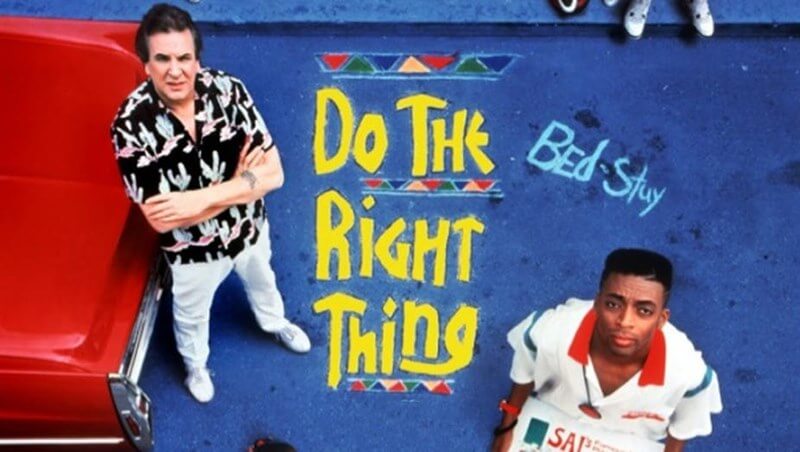
Spike Lee’s “Do the Right Thing” would be the spark that lit the fire in John Singleton to write Boyz n the Hood. (40 Acres and a Mule)
To be clear, these were not the only black filmmakers. But for those of us learning the craft, the names that dominated the classroom discussion are all the ones you might expect: Spielberg. Scorcese. Fincher. Fellini. Lynch. Coppola. etc. We didn’t learn about Gordon Parks or Oscar Micheaux in any of my classes (and if you don’t recognize those names, don’t feel bad. Most people wouldn’t. But they absolutely were seminal figures in African American cinema.)
So when a young-ish aspiring filmmaker with a business degree saw the rising career of John Singleton, I took notice. By the time I had started taking film classes, John had already become the youngest person (at 24) and first African American to be nominated for a Best Director Academy Award. (Up to that point, Orson Welles held the distinction of youngest director nominee for 50 years for 1941’s Citizen Kane).
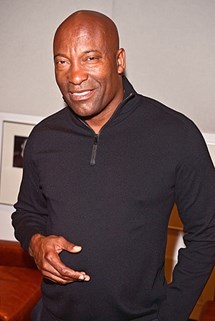
From ‘An Evening with John Singleton‘ 2003 (CC BY 2.0)
Boyz n the Hood had come out the year before I enrolled in film classes, and shamefully, at the time, I’m pretty sure I was scared out of watching it in the theater because there was so much news about how wherever the movie played, violence followed.
This was unfortunate because the movie had a very distinct message to “increase the peace.” In fact, Singleton insisted on including the slogan in the marketing.
But there was no denying the impact it had on me as an aspiring Black filmmaker when I finally did see this powerful film.
The Legacy
There are a few aspects about Boyz n the Hood that contribute to its legacy.
A film of “firsts”
Boyz n the Hood had several important firsts:
- The first feature film for writer/director John Singleton
- The first time an African American was nominated for best director
- First film Stephanie Allain (a Columbia Pictures executive who shepherded the film) oversaw a film as a VP
- First feature film for Ice Cube, Regina King, and Morris Chestnut
- First lead starring role for Cuba Gooding Jr.
An amazing cast
I’ve already mentioned some of the cast in the film. Ice Cube, Regina King, Morris Chestnut and Cuba Gooding Jr. all have had prolific and successful careers in Hollywood over the past 30 years. (As of this writing, Regina King has had an amazing 2 years starring in HBO’s Watchmen and directing her first feature, One Night in Miami, which had a string of guild, critics, festival, and industry award nominations). But in addition to these fine actors, Boyz n the Hood also starred Laurence Fishburne, Angela Bassett, Nia Long, and Tyra Ferrell. All of these actors had significant roles in the film and would go on and continue to have prosperous careers.
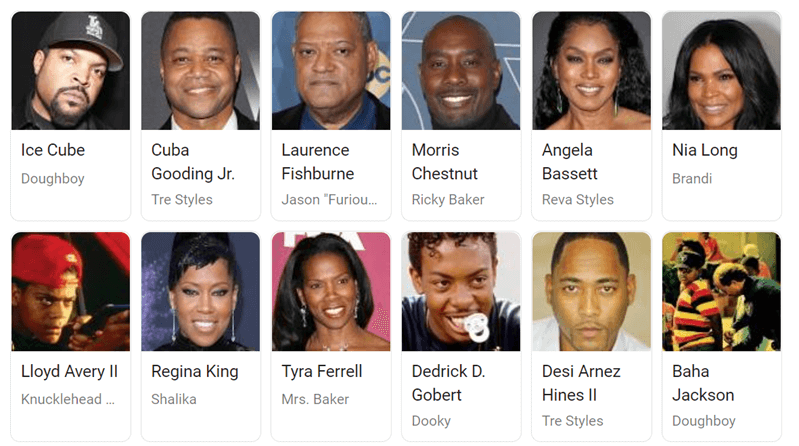
Critical and commercial success
The film’s critical success was undisputed, from the buzz it created when it appeared at Cannes that year to its Oscar nods. But it probably wouldn’t have had the impact for future Black filmmakers, as well as the careers of its cast, if it wasn’t also such a commercial hit.
With a budget of just over $6 million, it went on to gross nearly $60 million ($57.5 million, to be exact). These 2 figures are impressive for a couple of reasons. First, it was one of the rare times that a major studio would give a first-time writer/director a budget of that magnitude. Second, for a “small” film like that to earn nearly 10 times its budget is a phenomenal achievement.
The fact that Columbia Pictures gave Singleton that money is a testament to another key aspect of the film’s legacy…
John’s vision
John Singleton was a University of Southern California film student who was able to get himself an agent off the strength of his writing. But that doesn’t necessarily mean he would also get the proverbial “keys” to drive his own film. To accomplish that, he had both a singular vision and a lot of chutzpah.
While working on the set of Pee Wee Herman’s TV show as a PA, John met Laurence Fishburn and told him, “I’m going to write a script, and you’re going to be in it.” At the time, Fishburne had already made a name for himself as a respected actor and one of the cast members in Francis Ford Coppola’s “Apocalypse Now.” In interviews, Fishburne has commented how he didn’t really take “this kid” that seriously at the time.
John’s father also taught him that the best way to get something you wanted was to act like you don’t need it. So, when he was offered $100,000 to turn the script over, he declined. Instead, he was dead set on directing it himself. And to do it with an all-black crew.
Despite having no previous experience on a feature film set, John came to work each day prepped, focused and in control.
Get everything you need to create the perfect video
The music
Like Hip Hop of the day, the movie crossed over to win audiences of all ages and colors. Given Ice Cube’s popularity as a member of the rap group NWA, it was only natural for this film to have a fanbase similar to NWA’s. So, naturally, the movie’s soundtrack was heavily influenced by that music.
Ironically, the song for which the movie gets its title doesn’t appear on the soundtrack or in the film.
However, the film is a testament to the power of music when paired with images. To this day, whenever I hear O-o-h Child by The Five Stairsteps, I think of that scene in the first act of the movie when the young Doughboy is taken by the police. It was such a powerful juxtaposition to a hopeful song played as the backdrop of a hopeless situation.
Opening the eyes
One of the stories you repeatedly hear when watching any documentary about the film is the amazing reception it had wherever it was screened. It debuted at the Cannes film festival that year, and according to Columbia Pictures VP at the time and the person who “discovered” John, Stephanie Allain, the film received a 20-minute standing ovation. The sole producing credit on the film was Steve Nicoleidas, and he said of the response to the film, “The victims of the Hood were personalized. We got to know them.”
I think this is why the film was so powerful and why it has stood the test of time. Visions of the street life in tough neighborhoods like South Central L.A. were known to the general public, but they were distant faces and names no one knew. You could literally be a 15-minute drive away, and South Central might as well be on the other side of the world.
But here was a movie that introduced you to Tre (Cuba Gooding Jr.), Ricky (Morris Chestnut), Doughboy (Ice Cube), Brandi (Nia Long) and the rest. You got to see life through the eyes of these young kids in a way you never did. They laughed just like you laughed. They cried. They had dreams.
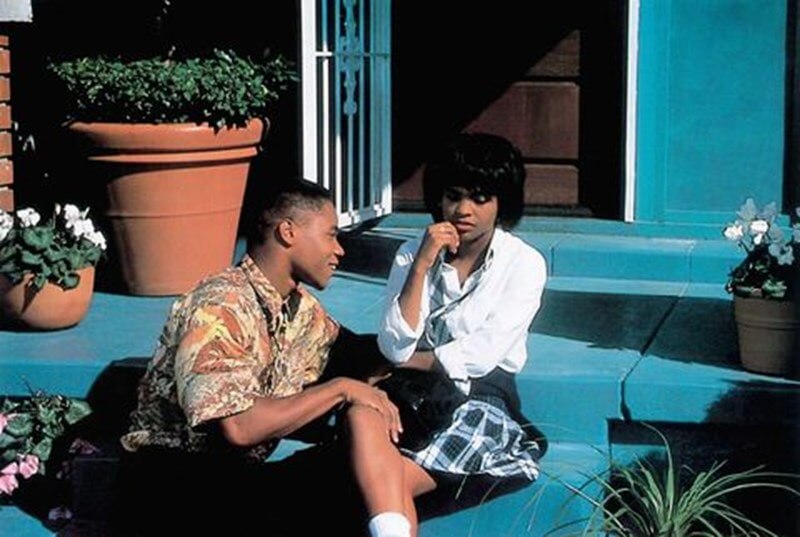
Cuba Gooding Jr. and Nia Long. © Columbia Pictures
You got to see the challenges of being a single dad through the performance of Laurence Fishburne as Furious Styles, Tre’s dad. He was a powerful role model and father figure to so many young black boys who didn’t have fathers. Furious was smart, dedicated, fearless and wise. But most importantly, he loved his son with deep and protective love. No scene depicted that more than when Furious confronts Tre after Ricky (Tre’s best friend) has been shot and killed by a local gang member. The scene shows the power of a father’s love, the feeling of anguish and desperation in Tre’s tears and the realization that there could be many more conversations like these between Furious and Tre. It’s a chilling reminder of what these kids endure daily and what the parents endure to keep their kids alive.
For the first time, people saw “the hood” with opened eyes and in a new light.
Singleton dies, but his legacy lives on
On April 28, 2019, John Singleton passed away after suffering a major stroke and eventually being taken off life support. He was only 51.
Much like his leading actors, John would go on to have a prosperous and fulfilling career. In his next film, he directed Janet Jackson and Tupac Shakur in Poetic Justice. He also went on to direct Rosewood, based on the real-life events of the Rosewood race massacre of 1923.
He’d direct a total of nine feature films (one of which was even a Fast and Furious movie), and produce and/or direct several television programs (including Empire and as recent as Snowfall in 2019).
In 2002, Boyz n the Hood was placed in the Library of Congress National Film Registry. I believe the reason it has had such a powerful impact was that it opened the eyes of so many people who just didn’t know the more profound and personal stories in “the hood.” As Ice Cube’s character Doughboy puts so poignantly at the end of the movie:
“Either they don’t know, don’t show or don’t care about what’s going on in the hood.”
Thanks to John Singleton and his groundbreaking classic, people would know and care about what happens in the hood.
For nearly 20 years, Ron has been a professional video producer, content marketer, and influencer in the visual arts industry. Most recently was managing editor of the Frame.io blog and currently managing editor of Film Riot. He helps brands and creative artists tell their stories using video, content, and words. You can learn more about him at https://bladeronner.media.
Share this article
Did you find this article useful?
Related Posts
- By Artlist
- 5 MIN READ
- By Alice Austin
- 7 MIN READ
Latest Posts
- 17 Apr
- By Daniela Bowker
- 7 MIN READ
- 15 Apr
- By Rebecca Helfenbaum
- 4 MIN READ
